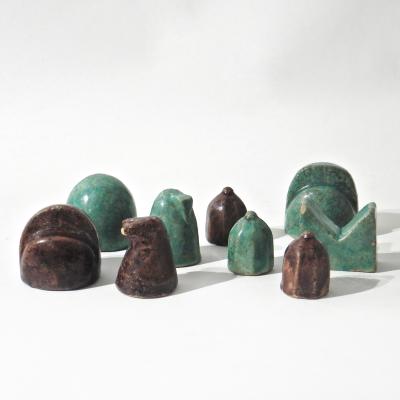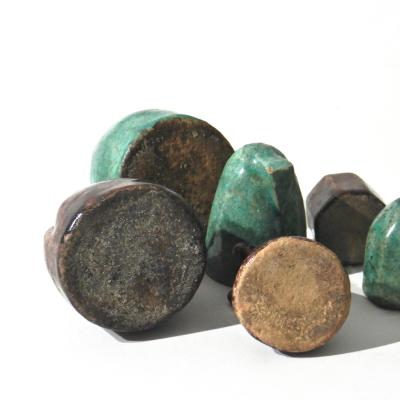Nove pedine degli scacchi
L'aggiudicazione sarà gravata di diritti d'asta nella percentuale del 25.00%
Nove pedine degli scacchi
Iran, XII secolo o posteriore
In pasta silicea invetriata di azzurro o bruno e lavorata a stampo a raffigurare: Un re, identificabile con la sagoma di un trono, due Vizier, equivalenti alla regina e simboleggiati dai seggi più piccoli rispetto a quello del re un elefante, equivalente dell’alfiere, caratterizzato dalle due protrusioni che richiamano le zanne tre pedoni, a cupola con corpo sfaccettato il carro, equivalente della torre e un cavallo. Il gioco degli scacchi ha origine in India nel VI-VII secolo d.C. dove veniva chiamato caturanga, e rappresentava le quattro divisioni dell’esercito (fanteria, cavalleria, elefanti, carri). In breve il gioco di strategia si diffuse verso ovest e venne adottato nell’Impero sasanide (Persia) con il nome chatrang, diventando parte dell’educazione principesca. Dopo la conquista islamica della Persia nel VII secolo, il gioco prese il nome di shatranj e adottò forme sempre più stilizzate e aniconiche per rispettare il divieto religioso di raffigurare esseri viventi.
Per approfondimenti si veda Carboni S., Chess and Other Games Pieces from Islamic Lands, Thames and Hudson, 2018.
Per un esemplare comparativo si veda Metropolitan Museum New York, Acc. no. 1971.193a-ff.
Il più alto: H. 5 cm
Nine chess pawns
Iran, 12th century or later
Made of blue or brown glazed fritware body and moulded to depict: A king, identifiable with the outline of a throne, two viziers, equivalent to the queen, symbolized by seats smaller than that of the king an elephant, equivalent to the bishop, characterized by the two protrusions that recall the tusks three pawns, domed with faceted bodies a chariot, equivalent to the rook, and a horse.
The game of chess originated in India in the 6th-7th centuries AD where it’s original name was caturanga and represented the four divisions of the army (infantry, cavalry, elephants, chariots). The strategy game soon spread westwards and was adopted in the Sasanian Empire (Persia) under the name chatrang, becoming part of princely education. After the Islamic conquest of Persia in the 7th century, the game took the name shatranj and adopted increasingly stylized and aniconic shapes to comply with the religious ban on depicting living beings.
For further information see Carboni S., Chess and Other Games Pieces from Islamic Lands, Thames and Hudson, 2018.
For a comparative exemplar, see Metropolitan Museum New York, Acc. no. 1971.193a-ff.
Il più alto: H. 5 cm
Arte Orientale
Inizio Offerte: 09-06-2025 12:45:02 – Fine Offerte: 30-06-2025 14:00:00




